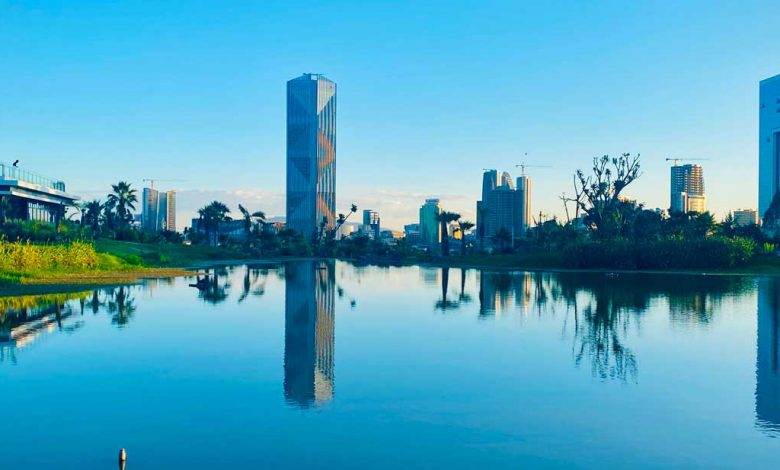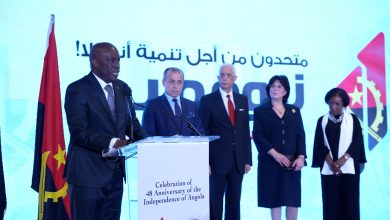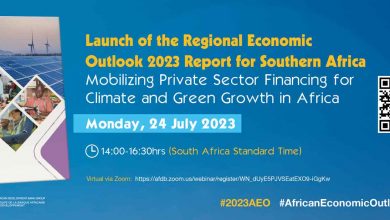Addis Ababa “Beautification Sheger” River Development Project | African Development Bank

Diplomat.Today
The African Development Bank
2022-11-17 00:00:00
——————————————-
Addis Ababa, the capital of Ethiopia, sits more than 2,000 meters above sea level on the high plateaus bordering the Great Rift Valley and is surrounded by majestic mountains.
Deep in the folds of the land flow numerous streams that are tributaries of the Sheger River. The river rises in the hills along the northern edge of the city before flowing south through the heart.
There is a hidden aspect to this idyllic landscape: the region is vulnerable to climate change and increasingly violent and frequent rainfall. At the same time, Addis Ababa is experiencing galloping urbanization. In the past 20 years, the population of the Ethiopian capital has more than doubled to 5 million inhabitants, a trend in line with other major African cities. The water now penetrates with difficulty through many plots on which buildings are located. When it rains, the streets turn into mudslides that cause public health problems. The Sheger River regularly floods downtown, carrying water and dumping waste.
City residents are wary of the river and fear the floods. Municipalities, the Ethiopian government and donors – with the support of the African Development Bank – have decided to tackle the flooding and also develop the potential of the Sheger River.
In 2019, the Ethiopian authorities launched an ambitious project to redevelop the Sheger River basin. The African Development Bank is contributing through its Urban and Municipal Development Fund, which aims to support the expansion of African cities by helping them anticipate and formulate their development plans and mobilize finance.
The Fund has made the adaptation of African cities to climate change one of its priorities, along with social inclusion. The premise of the fund is that investment choices and models should be based on hard data from the field – something that many African cities still lack.
For the redevelopment of the Sheger River and its various tributaries, the Fund has therefore designed a strategy (see here) financed by several donors, namely: the Italian, Chinese and Korean development agencies, as well as UN Habitat. The project involves the redevelopment of 69 km of rivers, in an area with more than 1.3 million inhabitants.
First, the Fund had to take a step back and take a long-term view, such as anticipating changes in precipitation patterns in the coming decades. The Fund for Urban and Municipal Development started funding hydrographic studies, focusing on extreme events and floodplain mapping.
The map below shows a number of these flood-prone areas (in pink)), most of which are located in the administrative and commercial heart of the city, near Meskel Square, where the Kachane Orma and Kurtumi rivers meet to form the Bantyiketu River.
The study made it possible to incorporate the effects of climate change into urban planning designs. An important part of the project is the construction of rainwater collection ponds on the tributaries of the Sheger. These will fill up during severe storms, limiting peak flooding and sparing populated areas. The riverbeds are cleaned and dredged to facilitate the flow of water. At the same time, parks and green spaces will be created along the watercourses, helping to absorb rainfall by becoming safe flood zones. There will be communal gardens where residents can grow their own vegetables.
The photos below provide a BEFORE and AFTER comparison of the planned developments on two major stretches of the river. The first is in the heart of densely populated squatter settlements where the Kurtumi and Kebena tributaries meet; the second is on flatter ground where the Bantyiketu River runs past the Addis Ababa Zoo.
View of the squatter settlements on the banks of the Kurtumi and Kebena rivers before the project

After the project and the development of the river banks

The Bantyiketu, which borders the Addis Zoo and the Peacock Park area of the European Union

Planned developments on the banks of the Sheger River

These developments are also intended to allow residents to take ownership of the riverbanks, which will become a green corridor ideal for walks and leisure activities of a type too rarely seen in African cities. This is the inclusive dimension of the project, which will improve the environment and quality of life for all residents in the city center, along the main river and in the vulnerable neighborhoods along the tributaries. The parks cool down surrounding neighborhoods and help reduce air pollution.
The project also includes an important part of the sanitary facilities. Public toilets will be built in the squatter settlements that have sprung up on the slopes of the Entoto Hills, which are the source of several watercourses, as well as a network of sewage pipes that carry wastewater to treatment plants. The city council hopes for new recreational areas and clean rivers that will once again flow through the city in a vicious circle.
While the primary goal is to prevent the massive human and material losses caused by flooding, the project’s financial projections are underpinned by environmental considerations: attractive neighborhoods with the potential to boost economic activity and boost the boost demand in the real estate sector, and even in tourism. This also means new tax revenues for the municipality and thus new investment opportunities.
——————————————-



